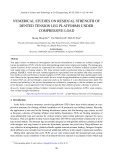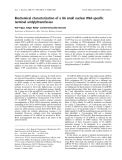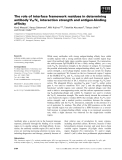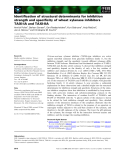
Residual strength
-
This paper focuses on numerical investigations and derived formulation to evaluate the residual strength of tension leg platforms (TLPs) with the local denting damage under axial compression loading. The damage generation scenarios in this research are represented the collision accidents of offshore stiffened cylinders TLPs with supply ships or floating subjects.
 14p
14p  vifilm
vifilm
 24-09-2024
24-09-2024
 2
2
 1
1
 Download
Download
-
The HeLa cell terminal uridylyltransferase (TUTase) that specifically modifies the 3¢-end of mammalian U6 small nuclear RNA (snRNA) was characterized with respect to ionic dependence and substrate requirements. Optimal enzyme activity was obtained at moderate ionic strength (60 mMKCl) anddependedon thepresenceof 5 mMMgCl2. In vitrosynthesizedU6 snRNA without a 3¢-terminal UMP residue was not accepted as substrate.
 10p
10p  tumor12
tumor12
 20-04-2013
20-04-2013
 40
40
 3
3
 Download
Download
-
While many antibodies with strong antigen-binding affinity have stable variable regions with a strong antibody heavy chain variable region frag-ment (VH)⁄antibody light chain variable region fragment (VL) interaction, the anti-lysozyme IgG HyHEL-10 has a fairly strong affinity, yet a very weak VH⁄VLinteraction strength, in the absence of antigen.
 11p
11p  inspiron33
inspiron33
 26-03-2013
26-03-2013
 40
40
 5
5
 Download
Download
-
Triticum aestivum xylanase inhibitor (TAXI)-type inhibitors are active against microbial xylanases from glycoside hydrolase family 11, but the inhibition strength and the specificity towards different xylanases differ between TAXI isoforms. Mutational and biochemical analyses of TAXI-I, TAXI-IIA andBacillus subtilisxylanase A showed that inhibition strength and specificity depend on the identity of only a few key residues of inhibitor and xylanase [Fierens K et al. (2005) FEBS J272, 5872–5882; Raedschelders Get al....
 12p
12p  vinaphone15
vinaphone15
 25-02-2013
25-02-2013
 30
30
 2
2
 Download
Download














